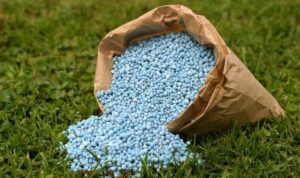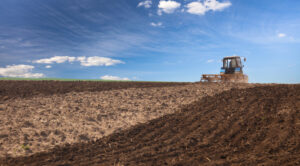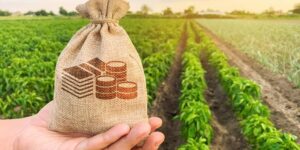
Agro-industrial group of companies Novaagro Ukraine (Kharkiv) has attracted UAH 350 million from Ukreximbank to support agricultural production, the company’s press service reported on Facebook.
“Novaagro Group of Companies continues to actively develop the agrarian direction thanks to the strategic partnership with Ukreximbank, which provided financing in the amount of UAH 350 million in the form of tranche credit lines and bill avalization limits to agricultural companies of the group,” the statement said.
The purpose of using the funds is to ensure the sowing and harvesting campaign, in particular on new areas in Kharkiv region, which became part of the group after the acquisition of assets of AgroGeneration in the fall of 2024.
Novaagro Ukraine added that the realized financing structure will allow the team to flexibly manage financial instruments in accordance with seasonal and production needs.
Novaagro Group of Companies has been operating in the Ukrainian and international markets since 2009. It consists of four operating companies specializing in trading, export of grain and oilseeds, cultivation, warehousing, production and sale of mixed fodder, wheat flour and granulated bran, chicken meat.
“Novaagro” has five elevators with a total capacity of one-time storage of more than 310 thousand tons, feed mill in Chkalovskoye (Kharkiv region), producing 200-300 tons of products per day.
According to the Unified State Register, the ultimate beneficiary of Novaagro Limited is Serhiy Polumisny.
As reported, in October, Novaagro completed the purchase of 56.9% of shares of AgroGeneration S.A., an agricultural holding company.

Nibulon JV LLC (Mykolaiv), one of the largest grain market operators in Ukraine, has signed an agreement with German machinery manufacturer CLAAS to purchase 29 units of agricultural machinery at the AGRITECHNICA-2023 exhibition in Hannover.
“The new equipment will allow Nibulon’s agricultural production department to start the spring field work of the 2024 season with new innovative machinery. The company expects that this will allow it to carry out basic technological operations in a short time and save fuel and other resources,” the company wrote on Facebook.
According to the report, CLAAS will supply Nibulon with 10 combines, 15 tractors, and 4 telescopic handlers.
The equipment is being updated as part of the project to reform the business and improve production technology initiated by Nibulon’s agricultural department in 2023. The agronomy division intends to reduce production costs and reach a competitive level with other agricultural producers. This course involves reducing the number of equipment while increasing the efficiency and accuracy of operations.
Nibulon JV LLC was established in 1991. Prior to the Russian military invasion, the grain trader had 27 transshipment terminals and crop reception complexes, a capacity for simultaneous storage of 2.25 million tons of agricultural products, a fleet of 83 vessels (including 23 tugs), and owned the Mykolaiv Shipyard.
“Before the war, Nibulon cultivated 82 thousand hectares of land in 12 regions of Ukraine and exported agricultural products to more than 70 countries.
In 2021, the grain trader exported the highest ever 5.64 million tons of agricultural products, reaching record volumes of supplies to foreign markets in August – 0.7 million tons, in the fourth quarter – 1.88 million tons, and in the second half of the year – 3.71 million tons.
Nibulon’s losses from Russia’s full-scale military invasion have reached $400 million. The grain trader is currently operating at 30% of capacity and has set up a special unit to clear agricultural land of mines.

The US government, through the USAID AGRO Program, will provide Ukrainian agrarians with 12,000 tons of fertilizers for the autumn sowing season free of charge, the press service of the Ministry of Agrarian Policy and Food said.
“Before the war, Ukraine provided domestic needs for nitrogen fertilizers by 75%. However, due to the full-scale invasion, production has decreased due to logistical problems, broken production chains and rising costs of raw materials. This has limited access to fertilizer for micro, small, and medium-sized farmers. USAID will help agribusinesses ensure their farms have the fertilizer they need in the fall and continue next year,” the statement said.
Agrarians who cultivate from 5 to 500 hectares in any region of Ukraine (except for temporarily occupied territories), grow grain or oilseed crops, are registered as legal entities or individual entrepreneurs, in particular, family farms, will be able to participate in the program.
They will be able to receive 1 ton of nitroammophoska (NPK 16:16:16:16/15:15:15:15) for main and pre-sowing application.
Registration for assistance has already started in the State Agrarian Register (SAR). Applications are accepted exclusively through the GAR, under “Available Programs” – “NPK Fertilizer from USAID AGRO, 2023.” Registration will continue until the applied amount of fertilizer is exhausted.
The USAID AGRO program will hold a public webinar on July 20, 2023 on the terms and conditions and receiving assistance.
As reported, USAID launched a number of programs in 2022 to address the global food crisis, which is exacerbated by the war waged against Ukraine. In the spring of 2023, more than 8,200 Ukrainian agrarians received more than 6,300 tons of fertilizers from USAID, as well as seeds for sowing more than 48,300 hectares of sunflower and 15,000 hectares of corn.

Ukrainian agrarians are completing the sowing season: last week they sowed 14 thousand hectares of grain and leguminous crops, compared to 133.3 thousand hectares during the previous week and 193.5 thousand hectares a week earlier, the Ministry of Agricultural Policy and Food reported on Friday.
According to its data as of June 15, the area under spring cereals and leguminous plants reached 5.618 million hectares, which is 3% higher than in March forecast.
Sown area is 9.3% lower than last year: as of June 9, 2022, according to reports of the Ministry of Agrarian Policy, they accounted to 6196.6 million hectares.
The gap is formed mainly due to the most popular crops – corn, spring barley, sown by 13,5% and 14,9%, respectively, less than last year’s and amount to 4.014 and 810.0 thousand hectares.
At the same time, corn is 11% ahead of the Ministry of Agricultural Policy forecast of 3.618 million hectares, while barley was sown on 78% of the expected 1.041 million hectares.
Sown millet is exceeded last year’s figures, with 49.2 thousand hectares of area, but it is 82% of this year’s expected area.
At the same time areas under other crops are already more than a year ago. It concerns spring wheat – 271.1 thousand hectares (41.9%), pea – 138.5 thousand hectares (5.7%), buckwheat – 119.7 thousand hectares (59%).
Agrarians of 14 regions (Vinnitsa, Zakarpattya, Ivano-Frankovsk, Kirovograd, Lviv, Odesa, Poltava, Rivne, Sumy, Ternopol, Khmelnytsky, Cherkasy, Chernihiv and Chernivtsi regions) have sown spring crops, as the Ministry of Agriculture informed.
As compared to prewar 2021, spring cereals and leguminous crops are 24.7% lower, sunflower – 17.4%, sugar beet – 6.2%, while the soybeans are 27.6% higher.
Mingaropolitiki informed about the end of sowing of sugar beets, which amounted to 213.1 thousand hectares, or 97% of a plan. The areas under sunflower and soybeans are lagging behind the plan by 94% and 96% respectively, amounting to 5283.8 and 1773.5 thousand hectares.
As it was informed, winter wheat sowing this season amounted to 4166 thousand ha (-834 thousand ha to the previous one), winter barley – 536 thousand ha (-255 thousand ha), rape – 1374 thousand ha (+110 thousand ha).
According to the forecast of the Ministry of late March, the area of grain and leguminous crops in 2023 will amount to 10.24 million hectares, which is 1.4 million less than in 2022, while under oilseeds they will grow by 0.92 million hectares – to 8.85 million.

State-owned Oschadbank (Kyiv) has launched a preferential lending program for agrarians for the 2023 sowing season to purchase seeds, plant protection products, microfertilizers and machinery from Spectrum-Agro LLC (Obukhiv, Kyiv region).
According to the press service of Oschadbank, farmers will be able to purchase agricultural machinery on credit at 5% and 9% per annum for working capital replenishment of up to UAH 90 million under the government program “Affordable Loans 5-7-9%”.
Microfertilizers, plant protection products and soybean seeds produced by Spectrum-Agro can be purchased at a rate of 0.01% per annum for up to UAH 20 million with a seasonally adapted repayment schedule, the release said.
According to Oschadbank, to obtain such a loan, it is enough to provide a simplified package of documents to obtain a decision on it. In addition to priority consideration of applications, all those who have taken advantage of the loan will be able to quickly receive a preliminary decision to replenish working capital through the online platform Agroapp.
The State Bank also reported that since February 24, 2022, it has provided about UAH 10 billion to agricultural enterprises under the Affordable Loans 5-7-9% program. The share of agricultural loans in the total portfolio of this program issued by Oschadbank during the war is 72%. The second place is occupied by trade enterprises, to which the bank issued 16% of loans under the affordable loan program.
“Spectr-Agro is a distributor of plant protection products, fertilizers and agricultural machinery from leading global and Ukrainian manufacturers (Deutz-Fahr, HARDI, Kockerling, Dieci, SOLA).
According to opendatabot, Spectrum-Agro increased its revenue by 1.2% to UAH 6 billion 262.6 million in 2022, while its net profit decreased by 20% to UAH 209.84 million.
State-owned Oschadbank, according to the National Bank, ranked 2nd in terms of total assets (UAH 311.19 billion) among 65 banks in the country as of March 1, 2023.

Ukraine in terms of the total area of crops in the current season is lagging behind compared to last year’s figures, the lag depending on the crop is from 20% to 30%, Minister of Agrarian Policy and Food Mykola Solsky said at a briefing at the Ukrainian Media Center on Monday.
“The quality of crops is significantly worse compared to previous years for obvious reasons. This is already very bad for world markets and even worse in the medium or long term,” he added.
According to the minister, in addition to the military invasion of the Russian Federation, the course of the sowing season is negatively affected by a number of factors, primarily logistical ones.
“The sowing campaign in Ukraine is quite active. There are understandable difficulties, primarily with logistics. Farmers and agricultural enterprises spend less money on basic things – seeds, herbicides. They save as much as possible, given the interruptions in diesel. Obviously, there are losses in time, let’s call it that, because the curfew, the movement of equipment, some equipment went to the front, there are also fewer people left,” Solsky specified.
According to him, there are difficulties with the storage of agricultural products and fuel. The combination of these factors leads to both a decrease in the volume of agricultural products produced and a deterioration in its quality.
As reported, during the sowing season-2022, by May 5, Ukraine sowed 7.1 million hectares of land with the main agricultural crops, which is 49.3% of the 14.4 million hectares planned for the current season. During the week of April 28 – May 5, 2.71 million hectares were sown.
According to the data published on its website, as of May 5, the area under sunflower crops is 2.4 million hectares (+1.03 million hectares per week), corn – 1.98 million hectares (sowing started this week), spring barley – 853.8 thousand hectares (sowing completed), spring wheat – 186.1 thousand hectares (+10.3 thousand hectares), oats – 153.5 thousand hectares (+9.5 thousand hectares), peas – 116.3 thousand ha (+3.3 thousand ha).
Prime Minister of Ukraine Denys Shmyhal said on April 20 that Ukraine will sow approximately 14.2 million hectares of agricultural land this season, which is 80% of last year’s figure of 16.9 million hectares.